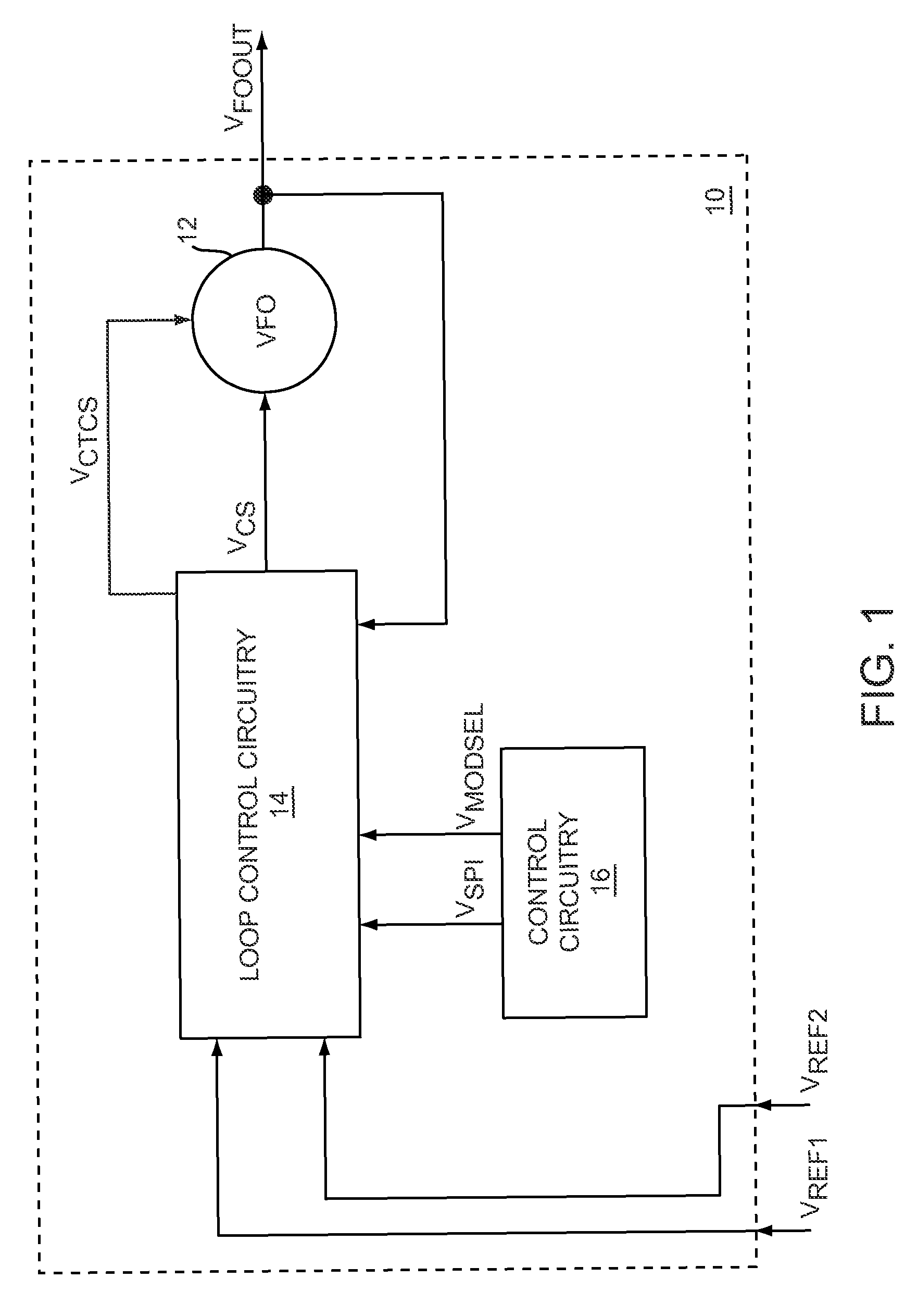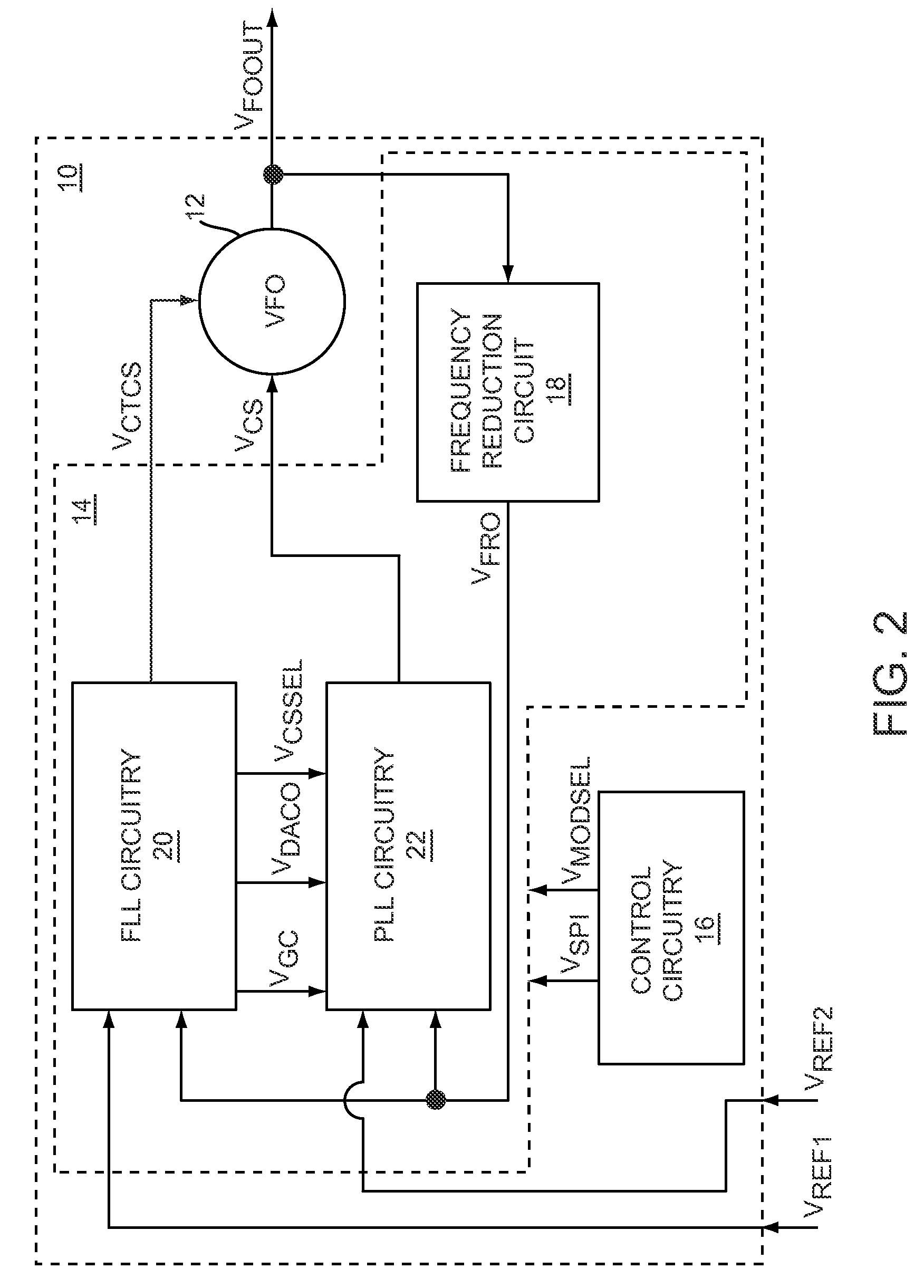Frequency-locked loop calibration of a phase-locked loop gain
- Summary
- Abstract
- Description
- Claims
- Application Information
AI Technical Summary
Benefits of technology
Problems solved by technology
Method used
Image
Examples
Embodiment Construction
[0005]The present invention relates to a calibrated phase-locked loop (PLL), which has a calibration mode for measuring a tuning gain of a variable frequency oscillator (VFO) and a PLL mode for normal operation. Calibration information based on the tuning gain is used during the PLL mode to regulate a PLL loop gain. During the calibration mode, the calibrated PLL operates as a frequency-locked loop (FLL) for low frequency lock times, and during the PLL mode the calibrated PLL operates as a PLL for high frequency accuracy and low phase noise. By regulating the PLL loop gain, phase lock times during the PLL mode may be reduced.
[0006]In one embodiment of the present invention, the calibration mode may include a first calibration mode and a second calibration mode for measuring the tuning gain of the VFO using two operating points. The calibrated PLL may have a coarse tuning mode. During the coarse tuning mode and the calibration mode, the calibrated PLL operates as an FLL; therefore, s...
PUM
 Login to View More
Login to View More Abstract
Description
Claims
Application Information
 Login to View More
Login to View More - R&D
- Intellectual Property
- Life Sciences
- Materials
- Tech Scout
- Unparalleled Data Quality
- Higher Quality Content
- 60% Fewer Hallucinations
Browse by: Latest US Patents, China's latest patents, Technical Efficacy Thesaurus, Application Domain, Technology Topic, Popular Technical Reports.
© 2025 PatSnap. All rights reserved.Legal|Privacy policy|Modern Slavery Act Transparency Statement|Sitemap|About US| Contact US: help@patsnap.com



